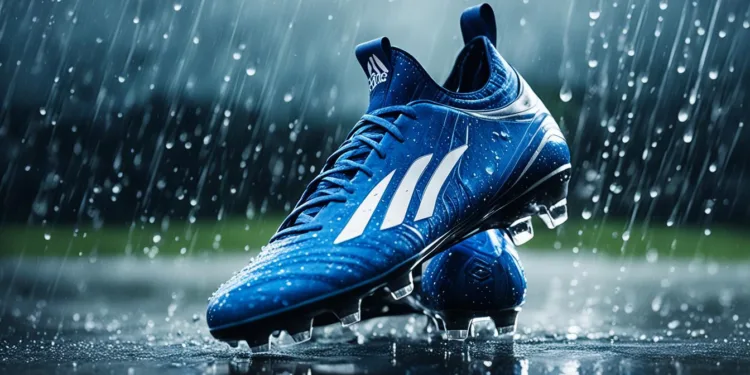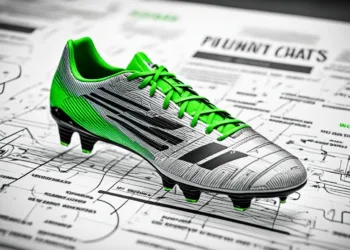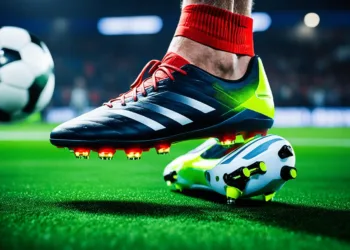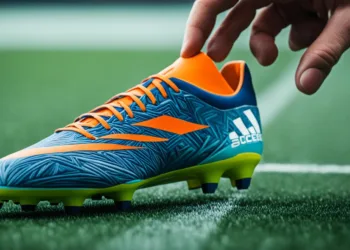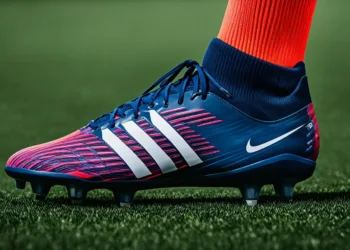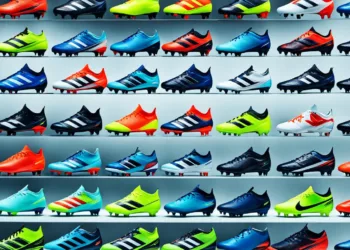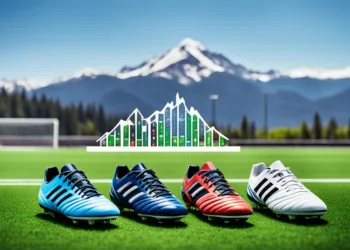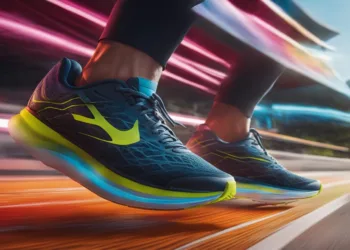Table of Contents
Soccer Cleats Waterproofing: Whether you’re an amateur player or a seasoned pro, keeping your feet dry on the soccer field cannot be overstated. Keeping your feet dry is pivotal for comfort and is critical to maintaining foot health and ensuring optimal performance during each match. Fortunately, there are effective methods to waterproof soccer shoes, helping you prevent risks from wet feet, including discomfort, blisters, athlete’s foot, and even trench foot.
One reliable solution to this problem is waterproof socks. These socks offer a valuable protective layer against moisture, promising to be 100% waterproof, windproof, and capable of facilitating breathability. Materials such as GORE-TEX or Porelle® membranes are commonly used to manufacture these socks, effectively providing a barrier against water penetration. While Merino wool isn’t completely waterproof, it can help repel moisture, ensuring your feet stay comfortable and dry.
On the other hand, do-it-yourself waterproofing techniques and commercial products designed to enhance the water resistance of your soccer cleats offer an alternative yet equally effective solution. Easy-to-apply treatments, including creams, oils, or silicone sprays, can significantly reinforce your soccer cleats’ resistance against water. Remember, the cleats’ material is an essential aspect to consider when choosing a waterproofing treatment for its effectiveness and the durability of the waterproofing effect.
Key Takeaways:
- Importance of Waterproofing: Protect your cleats from damage.
- Complementary Products: How waterproof socks can help.
- DIY Techniques: Learn to waterproof your cleats at home.
- Product Reviews: Discover the best waterproofing products.
The Importance of Waterproof Soccer Cleats
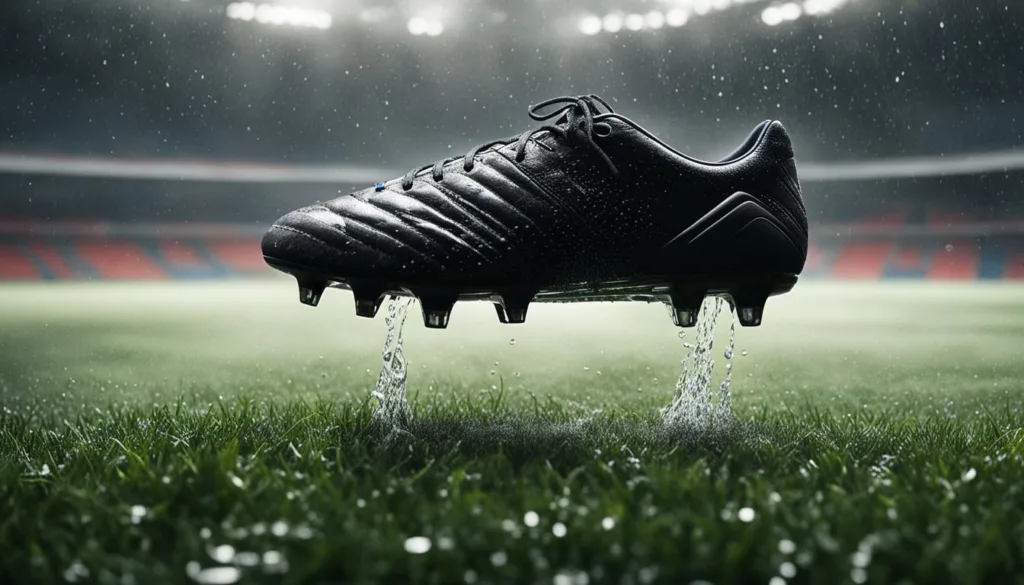
As athletes navigating the rough and unpredictable terrains of soccer fields, your cleats bear the brunt of the environment. Wet conditions are a prominent part of this picture, and waterproof soccer cleats emerge as a stalwart defence in such scenarios. From enhancing performance to maintaining foot health, waterproof cleats offer numerous advantages that extend beyond the pitch.
Understanding the Risks of Wet Conditions for Athletes
Playing in wet conditions without necessary precautions can expose you to the risks of foot ailments. Persistent moisture can lead to blisters, invite fungal infections, and, in severe cases, trigger trench foot, threatening your comfort and career. Here, the combination of waterproofing techniques for Soccer Cleats and vigilance assures safety.
Long-Term Benefits of Keeping Feet Dry
Waterproof soccer cleats offer more than immediate relief from the discomfort of soaked feet. They ensure long-term foot health by preventing prolonged exposure to moisture. So, while you tackle your opponents on the field, the advantages of waterproof soccer cleats silently and steadily work towards keeping your feet dry and healthy.
Enhanced Performance with Proper Footwear
There’s no denying that comfortable footwear enhances on-field performance. Dry feet translate to better foot-to-shoe contact, reducing slippage inside the cleat. This, in turn, ensures more excellent stability and aids in precise control, imperative for dribbling, shooting, and tactical play. Owning a pair of waterproofing soccer cleats is equivalent to owning these advantages.
Waterproofing techniques such as waterproof socks, application of specific treatments, and regular maintenance bring an additional layer of defence against moisture. Rest assured, foot health in athletes isn’t merely a point of consideration but a pledge these cleats take on your behalf.
“read also: Soccer Cleats with Flexible Sole”
How Waterproof Socks Complement Soccer Cleats
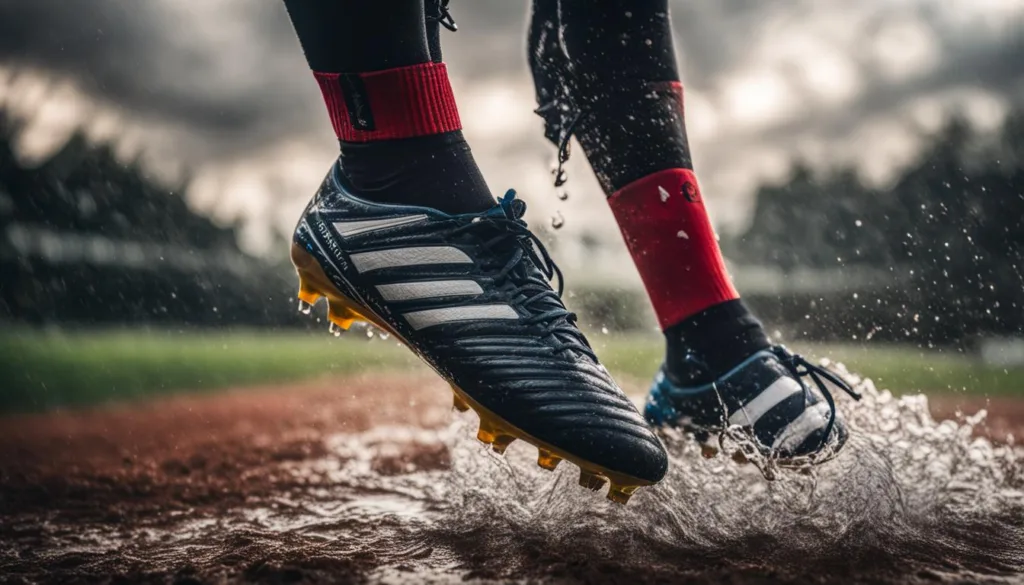
Integrating the best soccer cleat waterproofing products into your football gear repertoire guarantees dry feet, no matter the weather on the pitch. An often-overlooked tip for soccer shoe waterproofing is the strategic use of socks. Waterproof socks are an indispensable ally to waterproof soccer cleats, forming an efficient shield against unwanted moisture.
Choosing the Right Waterproof Socks
With an array of brand choices, selecting the right waterproof socks can seem challenging. Prioritize brands like DexShell, SealSkinz, and Bridgedale renowned for actualizing their promise of steadfast waterproofing.
Materials That Offer the Best Protection
The fabric of your waterproof socks plays a pivotal role in keeping moisture at bay. Look for socks made of GORE-TEX or Porelle® membranes; these materials act as reliable barriers against water while ensuring sufficient breathability. Merino wool, renowned for its moisture-resistant and expedited drying properties, makes another commendable choice.
Additional Features to Look for in Waterproof Socks
However, waterproofing isn’t the only feature your soccer socks should offer. Focus on finding waterproof socks that provide breathability, snug fit to preempt blisters and moisture-wicking capabilities. Additionally, all conscientious soccer players should consider maintaining a spare pair of wool or waterproof socks, especially for swapping after the game and ensuring feet remain dry post-play.
| Brand | Material | Additional features |
|---|---|---|
| DexShell | GORE-TEX | Breathable, Snug fit |
| SealSkinz | Porelle® Membrane | Moisture-wicking, snug-fit |
| Bridgedale | Merino Wool | Moisture-resistant, Faster-drying |
“read more: Running Shoes with Reflective Elements”
DIY Soccer Cleat Waterproofing Techniques
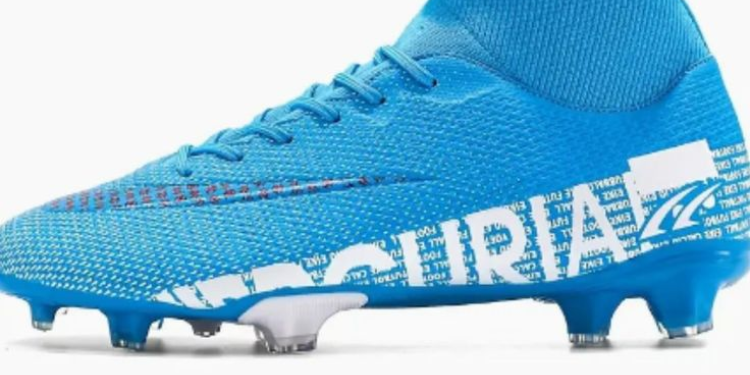
When it comes to maintaining the performance and longevity of your soccer shoes, one cannot overlook the importance of regular waterproofing. As a soccer player, you might have wondered, “What are some effective DIY Soccer Cleat Waterproofing techniques?” Keep reading to discover some valuable methods to waterproof soccer shoes at home.
Waterproofing your soccer cleats at home is cost-effective and allows you to care for them according to their specific material and usage. Each type of soccer shoe material may require a different DIY Soccer Cleat Waterproofing method, from leather to synthetic fabrics like nylon and Gore-Tex.
One of the most common and accessible methods is waterproofing oils, sprays, and waxes. These products form a transparent, protective barrier on the surface that repels water while allowing the material to breathe. For instance, treating cleats with a silicone spray or an oil-based product effectively blocks and repels water. This process is simple and only requires the spraying of the product evenly over the surface of the clean and dry cleats.
Another effective method for cleats made of canvas is the application of a natural beeswax coating. Beeswax forms a robust waterproof barrier that protects the cleats from moisture while preserving their texture and flexibility.
Remember, no matter which DIY Soccer Cleat Waterproofing technique you use, keeping your soccer shoes clean before applying any waterproofing treatment is crucial. Dirt and grime can hinder the effectiveness of the waterproof barrier, so thorough cleaning is essential.
The key to maintaining the waterproofing in soccer shoes is regular reapplication of the chosen product. Especially after exposure to wet conditions or cleaning, it’s essential to reapply these products to ensure continuous protection. Consider the frequency of usage, the intensity of the weather conditions, and the type of material when planning the maintenance schedule for your soccer shoes.
“read more: Running Shoes with Shock Absorption”
Soccer Cleats Waterproofing Products Review
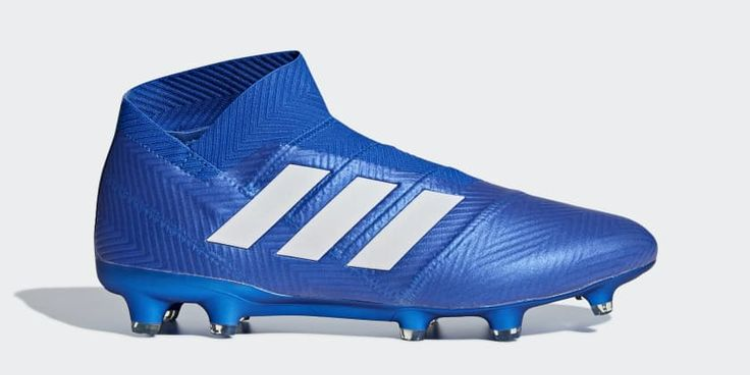
Having the right products for soccer cleat waterproofing is paramount when enhancing your performance on the pitch, even in torrential weather. Several waterproofing techniques cater to varying requirements like cleat material and usage as you seek to keep your feet dry. Therefore, let’s dive into the best soccer cleat waterproofing product recommendations that ensure optimal protection and elongate the lifespan of your soccer cleats.
Best Picks for Leather Soccer Cleats
Leather soccer cleats are known for their comfort and durability. However, they may require special care, especially in wet playing conditions. One ideal way to protect leather cleats is by applying waterproofing creams. These products penetrate the material, providing a robust water-repellent layer that enhances durability and ensures dryness. Brands offering waterproofing creams often include an applicator for easy use and uniform application.
Waterproofing Options for Synthetic Materials
Synthetic cleats, on the other hand, have unique protection needs. Most waterproofing sprays perfectly fit synthetic materials, serving the same role as creams for leather cleats. Waterproofing sprays are relatively easy to use, facilitating quick application and drying. The compatibility of these sprays with synthetic materials helps to effectively enhance the water opposition of your soccer cleats.
Application Tips for Maximum Efficacy
Applying them effectively for the best results is critical for whichever waterproofing product you select. Always start with a clean surface; ensure your cleats are thoroughly cleaned and slightly damp, promoting better product absorption. Pay special attention to seams and creases and cover the entire surface to create a protective barrier. Allow your shoes to dry naturally, away from direct sunlight or heat. Regular maintenance and application every few months or when you see the water stop beading on the cleats’ surface is crucial to maintaining the waterproofing effect, giving you the dryness and comfort you need on the field.
Waterproofing your soccer cleats is essential in maintaining their longevity and performance. Here are some tips to help you:
- Step 1: Clean your cleats. Use soapy water and a cloth to remove dirt or mud. Remember to remove the insole and laces before cleaning.
- Step 2: Dry your cleats properly. Avoid stepping on the back of the heel to pry them off, as this can damage the boot. Instead, untie the laces and remove your cleats properly. Let them air dry; do not use a heat source as it may damage the material.
- Step 3: Apply a leather food or a waterproofing product to your cleats. This will help protect the leather from water and keep them in good condition. Apply an even coat, let it dry until a light haze appears, then apply a second coat.
- Step 4: Once the product is dry, buff the cleats with a dry cloth to remove any excess product.
In conclusion, caring for your soccer cleats, especially those made from smooth leather like kangaroo leather, is essential for longevity. From removing dirt and mud to applying a leather conditioner, each step is crucial in maintaining the quality of your cleats. Remember, proper care can prevent unnecessary wear and tear and keep your cleats in good condition for many games. So, invest some time in taking care of your cleats – your performance on the field may depend on it.


